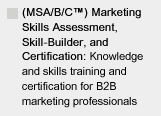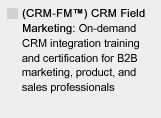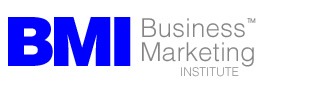MAKE SURE YOU CONTINUE TO RECEIVE EACH ISSUE OF TUESDAY MARKETING NOTES—CLICK HERE TO RENEW YOUR FREE SUBSCRIPTION (IF YOU'VE ALREADY SUBSCRIBED, NO NEED TO RE-SUBSCRIBE)

A Seven-Question Plan for Marketing Promotions
by Michele Linn, Linn Communications
Does this scenario sound familiar? You create some fabulous new content such as a white paper, webcast or e-book, and you want to tell the world. But, considering all of the options available with traditional and social media, it can be overwhelming to decide what works best.
My advice is to take a step back and focus on the basics. Ultimately, there are two things you need to decide: where you want to promote your offer and what you want to say. By focusing on the seven questions below, you can focus your thoughts and streamline your efforts.
What is your objective?
Be specific about the goal of your offer. For instance, do you want to generate leads, build a list, create buzz or establish yourself as a thought leader?
If you are trying to generate leads or build a list, you will want to require registration for your offer. However, if your goal is to generate buzz or be seen as a thought leader, I would strongly consider not requiring registration and letting your piece “go viral.”
(As food for thought, in his recent book, World Wide Rave, David Meerman Scott makes excellent points for why you should not require registration. Here’s just one: “When you eliminate the requirement of supplying personal information in order to receive something, the number of downloads or views goes up by as much as a factor of 50. That’s right—if you require an e-mail address or other personal information, perhaps only 2 percent of your audience will bother to download your stuff.”)
Who is your target audience?
I’m a big believer in targeting each promotion to a very specific audience; a one-size-fits-all approach usually results in nebulous offer that resonates with no one. To hone in on important prospect details, I suggest creating a buyer persona, which I discussed in a recent issue of Tuesday Marketing Notes, accessible here.
To have the best chance of success, you need to understand what makes someone tick, where they look for information and who influences their decisions. Understanding your audience will help you answer most of the questions below.
Where do your prospects search for information?
There are so many places where prospects look for information: Search engines, blogs, professional associations, newsletters, publications, Twitter, content syndication sites, forums, LinkedIn, etc. This sounds obvious, but if you don’t know exactly who you are trying to reach and what their online habits are, you won’t reach them. You have limited time and budget to promote your offer, so you need to make sure you are promoting in places where your readers are looking. For some tips on how to find your prospects online, check out a post I wrote for Savvy B2B Marketing.
What is your budget?
As a follow up to the previous question, you also need to consider your budget. Depending on your objective and the places where your prospects search for information, there are different promotional tactics you may want to consider.
If you are trying to generate buzz, you may want to focus on free or inexpensive ways to generate publicity, such as writing a news release, connecting with blog authors in your space, promoting your offer via Twitter, and joining LinkedIn groups (one note: If you are using social media to spread your message, focus on a few venues, become part of the community, and offer value before promoting yourself and your offer. Social media thrives on authentic people; most people do not respond well to overt promotions.)
On the other hand, if your goal is to generate leads and build a list and you have a budget, you may be more inclined to include traditional lead generation activities such as pay-per-click advertising, content syndication, and other online media venues that have a cost associated with them.
What pains are they experiencing?
After you have figured out where you want to promote your offer, you need to consider the content of your promotion. Identify the prospect’s pain point by uncovering what questions your readers have or what information are they searching for. If they aren’t experiencing an issue, your message will probably not resonate with them.
What benefit does your offer provide?
For some reason, identifying the benefit can be tricky. There is an inclination to tout the benefit of your product and solution, but your promotions need to explain what someone will achieve by viewing your offer. Identify the two or three succinct benefits the reader will receive from your offer, and make sure you highlight these points in your promotions.
What keywords do your prospects use?
Considering the way that people search for information (search engines, news alerts, RSS feeds, etc), it is critical for you to incorporate the right keywords in your promotions. I suggest focusing on three to five keywords for each promotion as you don’t want to stuff your promotions with so many keywords that they seem stilted and non-authentic.
Also remember that the title of the offer is the thing that people that is most widely-used in promotions so it should include you top one or two keywords. If your offer is included as part of a list of white papers on webcasts on your site or a content syndicator, you also need to make sure that it grabs someone’s attentions as they are scanning the list of titles.
Although every situation is different, I have found that answering these questions provides a solid framework for developing your promotional plan.
Michele Linn (http://www.linncommunications.com/) is a freelance marketing writer specializing in white papers, research reports, feature articles, case studies, and other B2B communications. Her business is devoted to making the job of B2B marketers easier by producing buyer-focused content and providing insights on how they can market it. She is also a founding member and frequent contributor to the Savvy B2B Marketing blog (http://savvyb2bmarketing.com/blog). Send her an email (michele@linncommunications.com) or follow her on Twitter (http://twitter.com/michelelinn)








